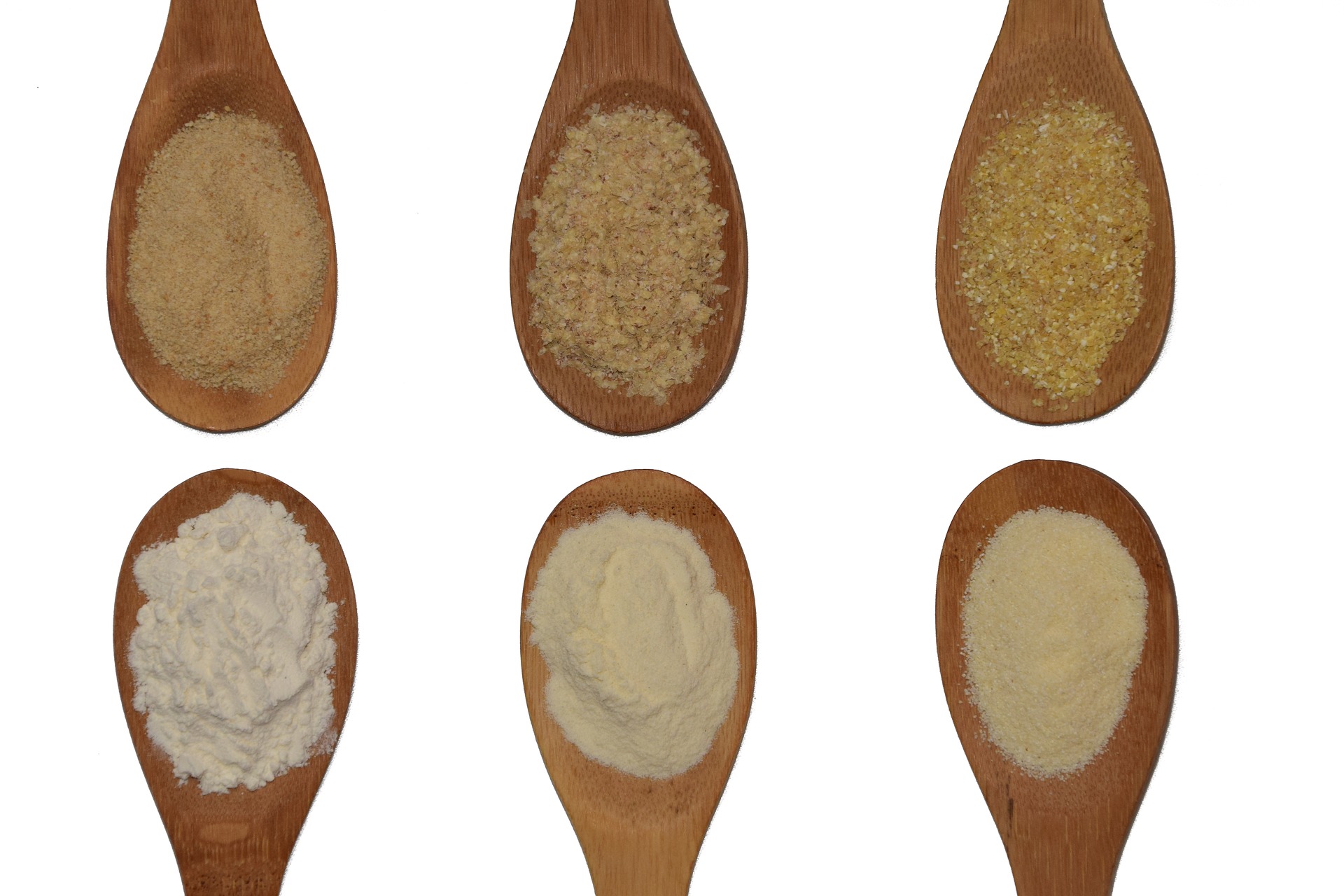What Are The Various Flours Used In Baking Made From? Here is a list of flours that are traditionally used to bake with.
When we walk through the flour market section, we no longer only come across white wheat flour, as in the past. It has flour made from various types of cereals, oilseeds, and even fruits. Each type of these grains, fruits, and seeds has its nutritional value that best fits our needs and restrictions, but that’s not enough, it still needs to match the recipe.
It’s not enough just to replace white wheat flour with chickpea flour without having to adjust the liquid and sugar levels in the rest of the recipe. As much as cooking often means testing until it gets the way we want it, it’s good to already have an idea of the ingredients that the dough needs and how the ingredient will work within the formula.
To start, we have put a list of different flours explaining their nutritional value, which type of dough they make the best, how to use them, and even how to make them at home.
White Wheat Flour
The most traditionally used in the bakery or kitchen. Composed of almost 85% of starch, these simple carbohydrates are easily metabolized and become our first source of energy: that’s why normally that pasta dish doesn’t bring us satiety for so long.
White wheat flour is produced by removing the husk and wheat germ, becoming just starch and gluten, since the cereal’s nutrients are retained in the refined parts. In this way, as much as it gives appetizing characteristics to the pasta, the food ends up becoming nutritionally poor, limiting itself to caloric energy gain.
Whole Grain Flour
By not going through the refinement that impoverishes white flour, whole grain is rich in soluble and insoluble fiber, vitamins, proteins, iron, and phosphorus. Made with the husk and germ, it takes longer to be digested in the body, promoting satiety for longer in addition to good intestinal regulation.
As they do not have the starch discovered as in white flour, the softness and moisture that it gives to bread or pasta are reduced in recipes. A large amount of fiber interferes with the action of gluten in expanding and making masses larger and more aerated.
You can substitute wholegrain flour with white flour in a recipe in a 1:1 ratio. It is also important to add more liquids about 10-15% more liquids to the recipe such as cookies and wholegrain bread.
Rice flour
There are people who say that this is the new wheat. In fact, rice flour is similar to white wheat flour, and even though it is a little drier, it can be substituted in pies, cakes, pasta because it gives it softness and structure.
Rice flour is gluten-free but still retains a high percentage of starch. Coming from the milling of white rice grains, it maintains the cereal’s nutrients being rich in amino acids. Its glycemic index is reasonable and it still works as a source of good fat and fiber.
As it does not have gluten, a combination of other ingredients is necessary to try to match the protein such as xanthan gum and potato starch.
Brown Rice Flour
The highlight of brown rice flour is its high amount of fiber: from 50g at least 2.4g are fiber. Due to its large proportion of carbohydrates, it brings all its health benefits
In the refinement of the whole grain rice to white, it destroys almost all the nutrients of the grain: 80% of the vitamin B1, 90% of the B6, 50% of the minerals, and almost 100% of the fiber and healthy fats are lost.
As in whole wheat flour, starch is not as exposed as in refined flour, so it does not have all the properties as other refined flour, such as lack of elasticity. This can be supplemented by using xanthan gum or flaxseed gel.
CASSAVA FLOUR
Cassava is a habit of our indigenous roots and is already well-known in our cuisine. With different versions, such as water flour, beiju flour, dried and gummed, it is not the main choice for dieters. It does not contain gluten, but it has a lot of starch making it very high in calories and carbohydrates. Cassava is rich in fiber, manganese, vitamin C, potassium, and iron which can have many benefits when consumed correctly.
This flour is popular in Brazil: it is the base for that farofa (toasted cassava) that goes well with any rice and beans.
You don’t need to use it just for farofa, as it gives elasticity and softness in recipes, it complements sauces and puddings well. For cakes, it can be used with a mixture of other ingredients that add the characteristics that white flour has and cassava does not.
Chickpea Flour
It can be used as a substitute for wheat flour in many recipes. Perfect for savory bread and pies, quiches, pancakes, but be careful, the taste of raw flour is terrible so use them in recipes that accompany very tasty ingredients, with lots of water, and that you cook well. Chickpea flour is a great substitute for recipes that call for eggs, it provides softness and is gluten-free.
The legume has many benefits, such as the high fiber, which controls diabetes, cholesterol and gives satiety, it also prevents diseases such as anemia, cramps, and osteoporosis due to the minerals it contains (iron, calcium, and phosphorus).
Green Banana Flour
Before ripe, bananas are rarely consumed due to the taste that “binds the mouth”, but it is in the fruit that is not yet fully developed that the highest nutritional index is found. Before its maturation, it is rich in resistant starch that is not digested in the stomach, only in the small intestine, acting as a soluble fiber that helps our intestinal flora. After it ripens, this starch becomes one of the fruit’s sugars.
That’s why its flour was developed, functional food that is simple to make. Simply cut the banana into slices and roast for 30 minutes, until it is very dry but not to the point of burning. Then, beat in a blender until it turns into flour, sieve, and store. It is believed that the process of transforming it into flour does not detract from its nutritional value. The flour lasts about 20 days;
It can be consumed with yogurt, juices, and fruits in the middle of the meals. Green banana flour can also replace white flour in recipes. From the total amount of the original flour, 80% of the banana flour can be added. Ideal for cakes, muffins, and pancakes.
Coconut flour
This fruit, which is the most consumed in the world, yields the multifunctional coconut oil and flour of the moment. This which is made from hydration followed by drying the pulp conserves the nutrients of the richest part of the fruit.
Coconut flour is very good for those who want to lose weight due to its medium-chain fatty acids that are easier to digest than other fatty acids, so it does not accumulate in the body, speeds up metabolism, gives the feeling of satiety for more. time and controls blood glucose by being released gradually into the bloodstream.
With a sweet taste, it reduces the amount of sugar in recipes. Ideal for pancakes, English bread, tapiocas, breading, and eating plain with yogurt and fruit. Coconut flour recipes call for the same amount of water as flour to provide more moisture. It can be used in cakes by combining another functional flour.
Corn Flour
Corn flour is more caloric than the others, but it pays off well in its nutritional value. Corn flour is very versatile in the bakery or kitchen, making it a good option for cakes, pastries, cookies, and others.
What few people know is that corn flour is excellent for eye health, as it contains a lot of vitamin A, lowers LDL cholesterol, has a lot of iron and is great for those with iron deficiency anemia, and also stimulates the immune system.
Do not confuse cornflour with bran and cornstarch. Starch, also known as cornstarch, is made only from the endosperm of the corn kernel, while corn flour is produced from the entire kernel of ground corn.
Passion Fruit Flour
Studies on fruit flour are now 20 years old and have brought good results. Made with the white part of the passion fruit rind, which is the most nutrient-filled portion of the fruit and remains in the form of flour. Fiber pectin, vitamin B3, iron, calcium, and phosphorus are some of the benefits.
Widely used for diabetics’ diet, as it affects the glycemic index and controls cholesterol in the body, also due to the gel formed by pectin in the stomach, which delays the absorption of food bolus and generates a feeling of satiety for a longer time.
Almond flour
The main benefit of almond is that it is a source of vitamin E. Except for being rich in nutrients, it is an excellent antioxidant, helps to reduce LDL cholesterol, helps with the body’s hormonal level, contains the amino acid L-arginine and regulates blood sugar.
Its way of doing it is simple: to remove the husks it is necessary to soak in hot water until they come out easily. Peeled, place them in a low oven until they dry out completely. Allow it to cool and beat in a blender until it forms flour. Important detail: it is essential to store it in a container that is sealed, is dark and in a cool place, otherwise, it oxidizes and acquires a rancid taste.
Almond flour has great greasiness as it is oleaginous. Because it has a neutral flavor and is a low-carb ingredient, it is a good substitute for white flour in cakes, muffins, cookies, and especially cookies, pies, and butter. It is often not even necessary to add butter to these recipes. It can also be used in place of a thread for breading. If you want to make bread, it is interesting to mix it with another one to give it more structure.



Leave a Reply